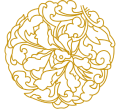The Secret History of the Mongols not only tells the story about the ancient origins of the great Mongolian khaans, and the life of Chinggis Khaan (1162-1227), the founder of the Great Mongolian Empire, and his unforgettable deeds, but also describes the life of the nomadic Mongols in realistic, accurate and meaningful way and it is a magnificent grand chronicle with rich source of materials that helps to gain multilateral understanding of the trends of Mongolian social reform in the 12th – 13th centuries.
The 131st session of the UNESCO's Executive Board, that held in Paris on June 20, 1989, discussed and unanimously approved the resolution to celebrate the historical 750th anniversary of the Secret History of the Mongols worldwide and in this resolution it was firstly announced that "the Secret History of the Mongols is the extraordinary masterpiece in the history of Mongolian literature with its unique richness of art, aesthetics and poetry, and it is duly included in the rich and luxurious treasury of the world's original art”. In this resolution it was recommended that the translation of the "Secret History of the Mongols" should be included in the UNESCO's encyclopedia of the best works for publication.
The “Secret History of the Mongols” is a unique and valuable memory of written history of Mongol dwellers. The 2nd volume of the research work “Compendium of studies of the Secret History of the Mongols” which was published on the occasion of the 780th anniversary of completion of the “Secret History of the Mongols”, contains 21 scientific articles written by Dr. Erdenyin Purevjav. The scientific articles that included in the “Compendium of studies of the Secret History of the Mongols” were published in the series of research journals such as "Studies of Linguistics", "Mongol studies", "Information on Mongol Studies", and the “Studies of Folklore” which have 60-years history and posses the leading position in international Mongol studies. The articles that had been published in earlier time were corrected a little bit and published with minor additions. I believe that the compilation of information and the facts of senior local and foreign scientists and translators who have worked so hard in the field of study of the “Secret History of the Mongols” is cognitive significant.




